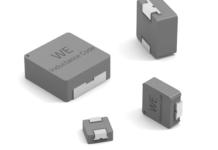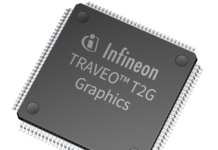
100 Base-T1 (IEEE 802.3bw) and 1000 Base-T1(IEEE 802.3bp), is an automotive ethernet standard aimed at increasing throughput and reducing cost in vehicle networks. The advancements in vehicle technology such as ADAS, infotainment, diagnostics and sensor networks has led to an increase in the amount of data being transmitted and generated. Legacy networks such as CAN, CAN-FD, LIN and FlexRay are not able to provide to required speeds.
Automotive Ethernet
Automotive ethernet (100BASE-T1) was developed for the automotive system requirements. It uses a single pair of unshielded twisted wires to transmit and receive data. 100BASE-T1 is a physical full-duplex interface enabling transmission and reception on the same pair, unlike 10BASE-T and 100BASE-TX, where transmission and reception are on dedicated pairs. Shared media reduces overall cable weight in the vehicle, not only reducing material cost but also improving fuel efficiency.
Automotive ethernet cables are shorter in length to account for the harsh environmental conditions in the vehicle, while also employing a different type of signal encoding to transmit the maximum amount of data using the least amount of bandwidth.
100BASE-T1 operates with a unique 4-bit to 3-bit (4B3B), 3-bit to 2-ternary pair (3B2T) and three- level pulse amplitude modulation (PAM3) encoding scheme to achieve reduced emissions compared to Fast Ethernet. A 100BASE-T1 PHY performs all necessary scrambling and encoding before transmission over the unshielded single twisted-pair cable.
Ethernet vs. Automotive Ethernet
The difference between the ethernet and automotive ethernet lies primarily in their physical layer. Unlike dual twisted pair cables in standard ethernet providing different paths for transmit and receive, automotive ethernet utilizes single twisted pair cables for full duplex communication.
Standard ethernet was not able to grow within the automotive ecosystem because it requires two twisted-pair cables and does not meet strict Comité International Spécial des Perturbations Radioélectriques (CISPR) 25 Class 5 radiated emissions limits
Advantages of Automotive Ethernet
Automotive Ethernet in vehicle networks provides the following advantages:
- Reduction in cabling weight and costs in comparison to conventional CAN / LIN harness
- Higher data-rates and throughputs with multiple CAN buses aggregated to a central link
- Low latency communication with minimal delay
- Allows for easy re-configuration to ensure uninterrupted connectivity
- Re-use of Internet Protocols (IP) software technologies from other industries
- Scalability in vehicle networks
- Advanced security features can be incorporated strengthening data security
Automotive Ethernet in a Telematics Gateway
Telematics Gateways serve as the central hub for communication and data processing in modern zonal vehicle architecture. The Telematics Gateway combines the functionality of a legacy gateway that bridges data between different ECUs and a telematics unit that is used for data logging, diagnostic purposes and communication to external networks.
The Telematics Gateway is a modular computing platform that allows data exchange between multiple electronic control units (ECUs) and servers. The Telematics Gateway acts as a bridge between the legacy CAN Networks and Automotive Ethernet network. Integrated with wireless connectivity modules such as LTE and Wi-Fi, The Telematics Gateways is a core architecture block in upcoming ECU and Vehicle network topologies
100BASE-T1 is a gateway technology that facilitates the adoption of in-vehicle networking enabling further development of automotive systems. Though the introduction of automotive ethernet brings significant advantages, the automotive industry is heavily invested in legacy networks such as CAN and is unlikely to make a complete transition. There is going to be a mix of traditional and new technologies, with a mix of non-ethernet and ethernet based ECUs and Gateways.
iWave, an embedded system engineering and solutions company, specialises in the design and manufacturing of telematics control units, telematics gateways and connected automotive solutions. With a strategic focus in the automotive vertical market, iWave empowers automotive OEMs with edge computing platforms, telematics solutions and ODM design services. iWave is driven by the mission to be the trusted embedded tech partner.


















